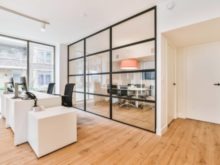Formaldehyde emissions in indoor environments
Indoor pollution is due to a high concentration of volatile organic compounds (VOCs) in indoor environments, which present a danger to our health.
VOCs, such as formaldehyde, are used during the production processes of many products of the manufacturing industry, such as wood-based panels.
Formaldehyde
Formaldehyde, which we have already discussed here, is a chemical compound used in many productions: building materials, wood-based panels, manufactured products, cosmetics, and household products are just some of the many uses of urea-formaldehyde resin.
High performance, extremely versatile but potentially dangerous: formaldehyde, at high concentrations in the environment and by inhalation, is harmful to human health and it is classified as a "priority indoor pollutant" by REACH and "Group 1 carcinogen" by the WHO.
The peculiarity of formaldehyde is its continuous emission in indoor environments: unlike other volatile organic compounds, which run out after a few weeks from laying or installation, there is a constant release of formaldehyde even for years, thus contributing to a negative impact on air quality.
For this reason, maximum levels of formaldehyde emissions have been set at European and International level to ensure the health of the environment and therefore of people.
Indoor pollution
We spend most of our time in buildings: whether public or private, they are enriched with furniture, and built with building materials also produced with the use of potentially hazardous substances, such as formaldehyde, limonene, and toluene.
The presence of these VOCs creates the so-called indoor pollution, a term that indicates the presence of highly harmful substances in confined spaces and that affects people’s health.
Pollution that makes no distinction between public buildings, such as schools and hospitals, and private homes.
Air quality and, consequently, people’s health can be directly affected by the presence of these substances: for this, knowledge of the emissions of VOCs of finished products and their control, are becoming a topic of relevance to the market.
Solutions that limit the emission of formaldehyde
In KALI we have developed a solution that can help manufacturers of wood-based panels, both for the construction and furniture sectors, to further limit the level of formaldehyde emission in indoor environments.
W.A.S., the result of in-depth studies and tests, is a formaldehyde scavenger that can be used during the production of chipboard or plywood panels: we wrote an article about it or you can consult W.A.S. here.

